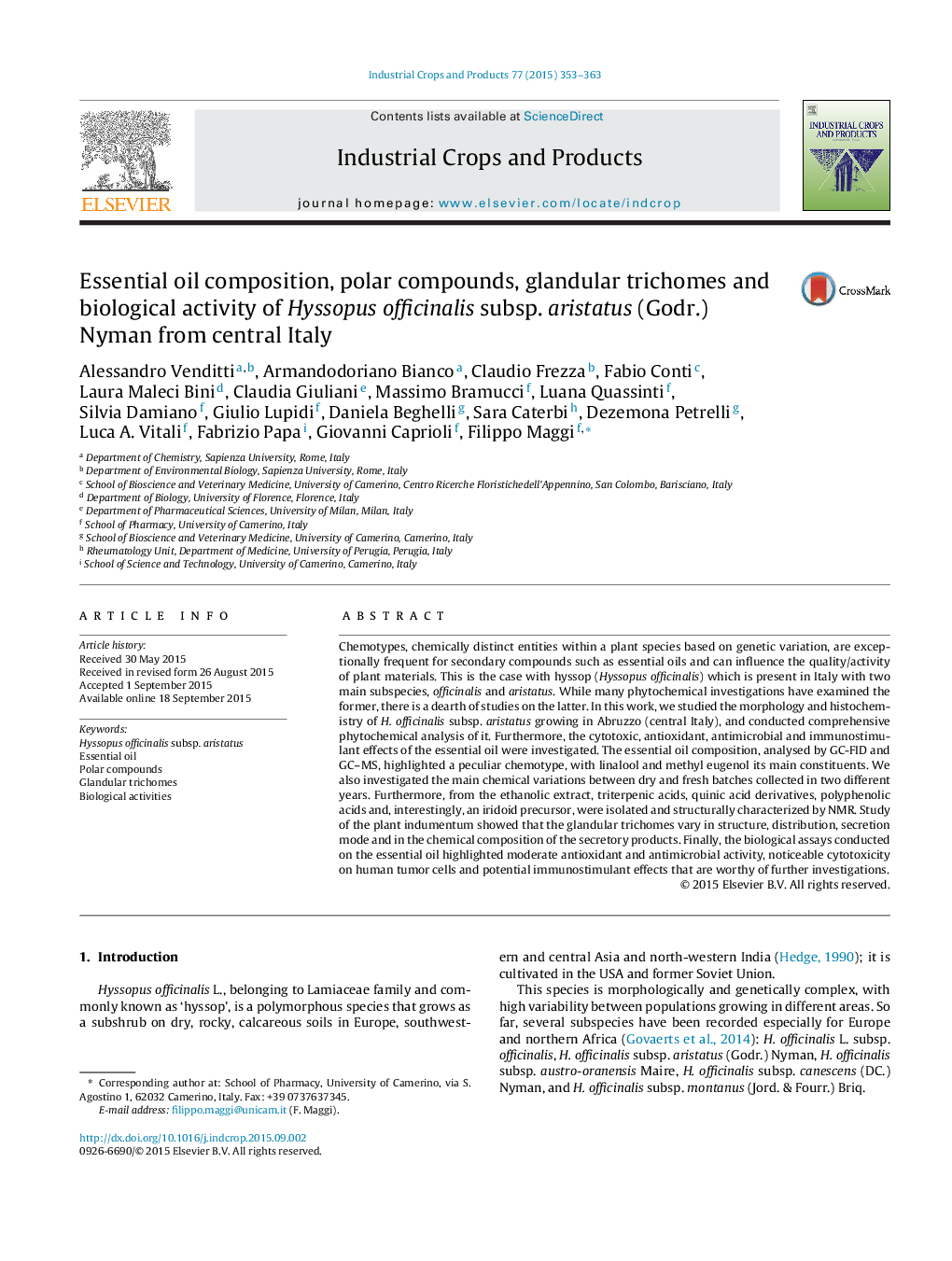| Article ID | Journal | Published Year | Pages | File Type |
|---|---|---|---|---|
| 4512645 | Industrial Crops and Products | 2015 | 11 Pages |
•Hyssopus officinalis subsp. aristatus growing in central Italy was investigated.•The essential oil showed a methyl eugenol/linalool chemotype.•Some polar compounds were isolated and structurally elucidated.•The plant indumentum was studied.•The biological activities were investigated.
Chemotypes, chemically distinct entities within a plant species based on genetic variation, are exceptionally frequent for secondary compounds such as essential oils and can influence the quality/activity of plant materials. This is the case with hyssop (Hyssopus officinalis) which is present in Italy with two main subspecies, officinalis and aristatus. While many phytochemical investigations have examined the former, there is a dearth of studies on the latter. In this work, we studied the morphology and histochemistry of H. officinalis subsp. aristatus growing in Abruzzo (central Italy), and conducted comprehensive phytochemical analysis of it. Furthermore, the cytotoxic, antioxidant, antimicrobial and immunostimulant effects of the essential oil were investigated. The essential oil composition, analysed by GC-FID and GC–MS, highlighted a peculiar chemotype, with linalool and methyl eugenol its main constituents. We also investigated the main chemical variations between dry and fresh batches collected in two different years. Furthermore, from the ethanolic extract, triterpenic acids, quinic acid derivatives, polyphenolic acids and, interestingly, an iridoid precursor, were isolated and structurally characterized by NMR. Study of the plant indumentum showed that the glandular trichomes vary in structure, distribution, secretion mode and in the chemical composition of the secretory products. Finally, the biological assays conducted on the essential oil highlighted moderate antioxidant and antimicrobial activity, noticeable cytotoxicity on human tumor cells and potential immunostimulant effects that are worthy of further investigations.
Graphical abstractFigure optionsDownload full-size imageDownload as PowerPoint slide
